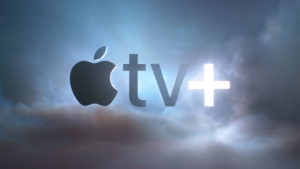
Streaming video accounts for more than half of all of fixed network Internet traffic, according to the newly released “Global Internet Phenomena” report from Sandvine, which based its findings on data from 250-plus communication service providers, or CSPs.
Web browsing and social networking accounted for far less peak traffic — with browsing accounting for just 6 percent of Internet traffic, and Facebook accounting for about 2.7 percent.
Netflix accounted for more than 36.5 of downstream traffic in peak evening hours in North America, the report notes.
HBO Go and HBO Now saw an increase in excess of 300 percent of average levels, to 4.1 percent of all U.S. fixed network traffic during the season five premiere of the hit series Game of Thrones.
YouTube accounted for 15.6 percent of downstream Internet traffic, while Amazon Instant video claimed 2 percent and Hulu 1.9 percent.
“Network traffic in the Americas seems to be getting increasingly concentrated,” said Dave Caputo, CEO of Sandvine.
“Netflix continues to rise as a percent of North American fixed network traffic,” he added. “Corporate decisions by these major players — like Netflix’s recent decision to encrypt their streams, or Facebook’s decision to autoplay videos uploaded to its site — can instantly and dramatically impact subscribers and all Internet access networks.”
Will Video Kill the Internet?
Video may be a threat to the Internet. As demand for video content increases, delivery services could be severely taxed. Difficulty meeting bandwidth demands is a problem that’s likely to be exacerbated as video resolution increases.
“It already is an issue, especially with 4K and higher video,” said Myra Moore, founder and principal analyst at Digital Tech Consulting.
“When you combine Netflix and YouTube traffic, that is more than 50 percent of total traffic — and if you further look at how it is trending, it isn’t new but it is just continuing to increase,” she told the E-Commerce Times. “This in turn portends that there is a great demand for on-demand video, but the new video is bandwidth-heavy.”
Many viewers already are taking notice.
“At certain times, there are quality issues with Netflix; and what we’re seeing isn’t really the full experience — at least not in 4K as promised,” explained Moore. “It is completely a bandwidth issue, and there are a number of ways in which attempts are being made to alleviate this.”
Some of these efforts include using bandwidth from mobile spectrum, which already has been auctioned off, Other bands of over-the-air spectrum will go up for auction next year.
However, “it is unlikely this will be the silver bullet and solve all the problems,” said Moore.
Game-Changer for Advertising
Trends in Internet use influence the way advertisers and marketers seek to attract eyeballs online. One thing that is readily apparent is that the traditional banner ad will be replaced by video ads that replicate the TV-viewer’s experience of watching commercials.
“We’re still at the very early stages of this,” said Moore. “Marketers and advertisers have spent the last 20 years trying to figure out if this works better, and one concern is that the more outlets there are, the less effective the ads could become.”
The increase in video online is essentially turning the Internet into the “new TV,” albeit with different methods to access content.
“Cable companies dominated the marketplace for years, but we are starting to see competition, especially with the increase in cord-cutters,” said Susan Schreiner, analyst for C4 Trends.
“What is also apparent is that consumers don’t seem to be averse to paying for content; we’re seeing that with Netflix. So they’ll pay for the content they want — they just don’t want to pay the cable companies and get channels they don’t want and the lousy service,” she told the E-Commerce Times.
Subscriptions vs. Ads
Two business models are emerging: the subscription based over-the-top services from the likes of Netflix, Amazon and Hulu; and the free ad-supported services such as Google-owned YouTube. Advertisers and marketers already are flocking to the latter, as it has become apparent that Google has taken its proven ad strategy to the realm of video.
“Google was an early pioneer in online advertising and mastering the understanding of analytics,” Schreiner pointed out. “It isn’t just amateur land, and it has become a viable platform — one that is solidly supported by advertising.”
At the same time, Netflix has proven itself to be an alternative source of content for cord-cutters, and with more than a third of all peak time traffic, Netflix has disrupted not only the way people use the Internet, but also the pay-TV industry.
“We’re at the very beginning for how this is going to work,” said Moore. “At the end of the day, all these companies need to make money, and Netflix is the giant which everyone is competing against. It is unlikely things will stay the same.”





















































Social Media
See all Social Media